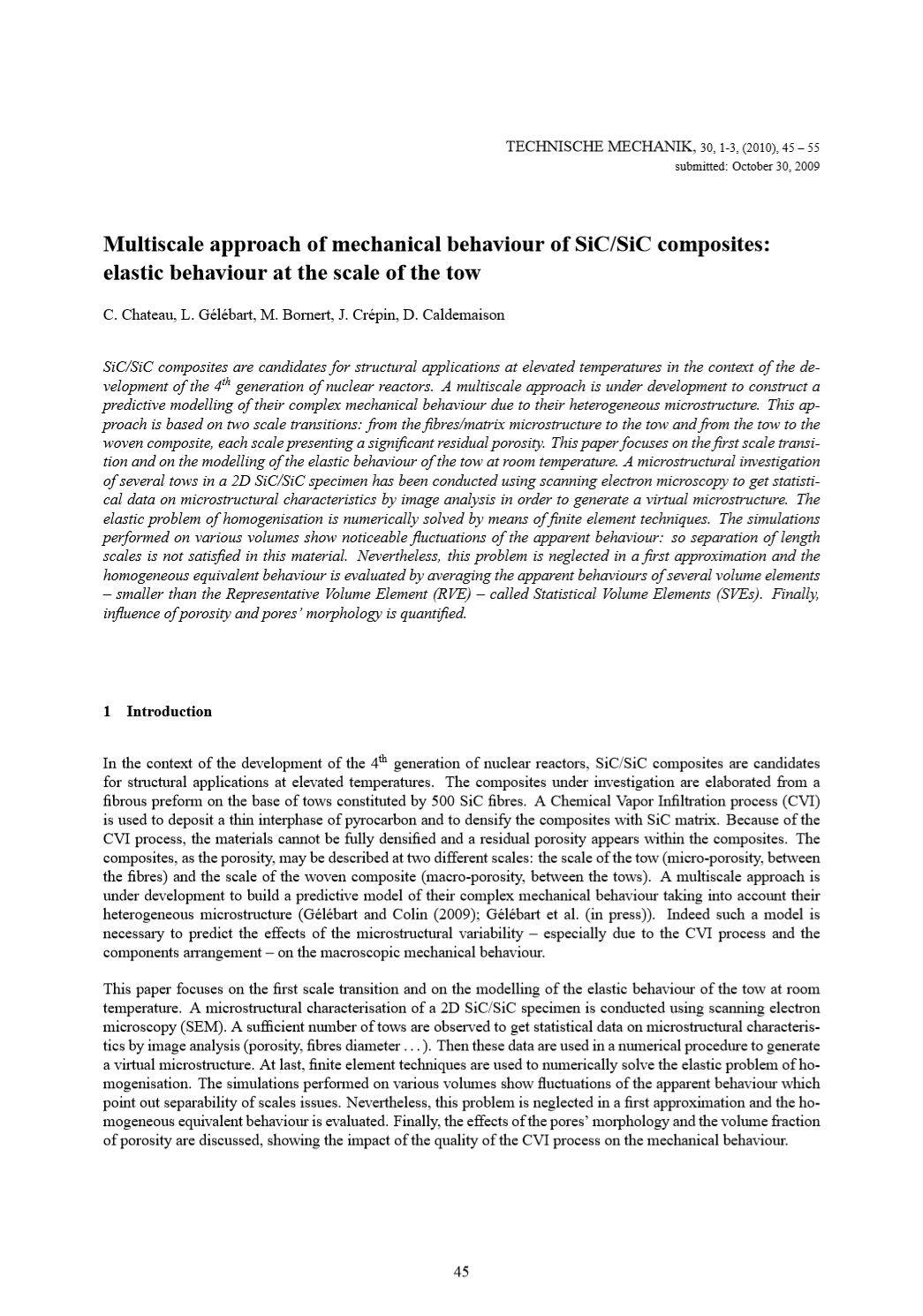Multiscale approach of mechanical behaviour of SiC/SiC composites
Elastic behaviour at the scale of the tow
Abstract
SiC/SiC composites are candidates for structural applications at elevated temperatures in the context of the development of the 4th generation of nuclear reactors. A multiscale approach is under development to construct a predictive modelling of their complex mechanical behaviour due to their heterogeneous microstructure. This approach is based on two scale transitions: from the fibres/matrix microstructure to the tow and from the tow to the woven composite, each scale presenting a significant residual porosity. This paper focuses on the first scale transition and on the modelling of the elastic behaviour of the tow at room temperature. A microstructural investigation of several tows in a 2D SiC/SiC specimen has been conducted using scanning electron microscopy to get statistical data on microstructural characteristics by image analysis in order to generate a virtual microstructure. The elastic problem of homogenisation is numerically solved by means of finite element techniques. The simulations performed on various volumes show noticeable fluctuations of the apparent behaviour: so separation of length scales is not satisfied in this material. Nevertheless, this problem is neglected in a first approximation and the homogeneous equivalent behaviour is evaluated by averaging the apparent behaviours of several volume elements – smaller than the Representative Volume Element (RVE) – called Statistical Volume Elements (SVEs). Finally, influence of porosity and pores’ morphology is quantified.





